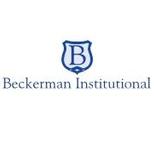Regular readers know I’ve never been a fan of ride sharing companies in general, nor Uber in particular. In my opinion, Uber is just a Rube Goldberg device designed to funnel investor money to Uber drivers in ever smaller amounts.
In my view, Uber burns cash like a dumpster fire and even the most bullish investors, analysts and journalists have to twist themselves in knots to justify whatever price target they’ve dreamed up. My price target? About $18/share.
Recently, on August 8, Uber reported its second quarter results. Those results and the accompanying 10-Q SEC filing validated many aspects of my bear case surrounding the company and its stock.

Cash Burn
First, Uber continues to burn cash. Specifically, Uber’s second quarter cash flow from operations was negative $922 million. That’s six times the cash burn in the year-earlier quarter. Its free cash flow was even worse: -$1.070 billion.
Next, Uber’s gross profit margins declined from 51% to 45% over that same time frame. While 45% is an impressive number, should it have declined at all when year-over-year revenue growth was 14% and Uber is either a monopoly or (with Lyft) a duopoly in most of its markets?
Answer? Uber’s competitive dominance isn’t real, as the 71% year-over-year increase in sales and marketing shows. In Q2, Uber spent 39% of its revenue on sales and marketing, up from 26% a year earlier. Doesn’t sound like any kind of “a monopoly” to me.
Uber Eats
Uber deflects concern about its core ride-share business by highlighting the growth in its food delivery service, Uber Eats. Eats revenue grew 71% in Q2 and now represents nearly 20% of total revenue.
But it is not profitable either. If food delivery was profitable by itself, then investment bankers would be all over Dominos, Papa Johns and Yum Brands (YUM) to spin off their own delivery operations. That’s not happening.
To understand Uber’s essential flaw, consider hitchhiking. There is zero marginal cost to a driver picking up a hitchhiker. Why? Because that driver was making that trip anyway.
But that basically never happens with Uber or Lyft: The car and driver wouldn’t be in motion absent the passenger’s need. So a car must be operated and a driver must be found. And the per-mile cost in the United States is around $0.60/mile for a late-model domestic sedan or small SUV.
Depreciation
If $0.60/mile seems high, consider that nearly half of that is depreciation on the vehicle. Which leads to the inconvenient truth about Uber: most of its drivers don’t accurately account for depreciation if they’re driving their own vehicles.
And Uber isn’t really interested in correcting them because it would alert drivers to how little they’re actually earning.
A clear-eyed, intellectually honest accounting reveals that an average full-time Uber driver makes about $8.65/hour in the U.S. And outside of the busiest, densest cities, drivers net even less.
Business Model
Uber has long maintained that self-driving cars will benefit their business model by removing the expense of the driver. In my opinion, however, self-driving cars are not going to happen, except in very narrow use cases in Southern latitudes where there is never any snow nor heavy rain.
And anyway, as the numbers I just cited show, the driver is not only the lesser of the two major costs, but they’ve also been thoughtfully providing the cars in the first place. Under a scheme where Uber (or a related entity) has to finance and purchase the cars, you can be sure the lessor or financing arm will be accurately accounting for depreciation.
Why is Uber still growing if I claim it’s a “bad” business? Because it’s not a business, it’s a charity, and the charity’s beneficiaries are getting as many below-cost rides in as they can before the investor money runs out.
Takeaway
How did I arrive at my price target? The typical price:sales ratio for an asset-light but cash-burning company is typically around 1x its current revenue rate.
Uber’s revenue run-rate in mid-August was roughly $13 billion. Divide that by 1.1 billion in shares and in-the-money options outstanding and you get $11.80/share. Add to that the roughly $6.60/share in net cash per share and you get $18.40.
But at Uber’s current rate of cash burn, in my view they’ll be out of money in less than two years. So next time you take an Uber, climb in, buckle up, settle back and contemplate Uber’s current price of about $36/share. Then ask yourself who’s really being taken for a ride.
Photo Credit: Stock Catalog via Flickr Creative Commons



